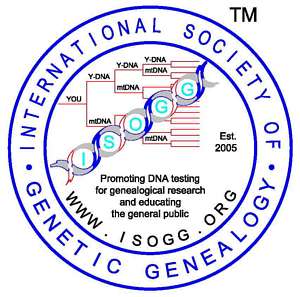Back to Y-DNA Tree Trunk
Back to SNP Index
Back to Papers/Presentations Cited
Back to Glossary Back to Listing Criteria
Copyright 2010. International Society of Genetic Genealogy. All Rights Reserved.

| LINKS: Main Page Y-DNA Tree Trunk SNP Index Papers/Presentations Cited Glossary Listing Criteria |
| CLADE/SUBCLADE SYMBOLS: Added Redefined |
| SNP SYMBOLS: Not on 2009 tree Confirmed within subclade Provisional Private |
G M201, P257,
U2, U3, U6, U7, U12, U17, U20, U21, U23, U33
�
G* -
�
G1 M285, M342
� �
G1* -
� �
G1a P20
� �
�
G1a* *
� �
�
G1a1 L201, L202, L203
� �
G1b P76
�
G2 P287
� �
G2* -
� �
G2a L31/S149, P15, U5
� �
�
G2a* -
� �
�
G2a1 P16
� �
� �
G2a1* -
� �
� �
G2a1a P18
� �
�
G2a2 M286
� �
�
G2a3 L30/S126, L32/S148/U8
� �
� �
G2a3* -
� �
� �
G2a3a M406
� �
� � �
G2a3a* -
� �
� � �
G2a3a1 L14/S130/U16, L90/S133
� �
� � �
G2a3a2 L184, L185
� �
� �
G2a3b L141
� �
� � �
G2a3b* -
� �
� �
�
G2a3b1 P303/S135
� �
� �
� �
G2a3b1* -
� �
� �
� �
G2a3b1a L140
� �
� �
� �
�
G2a3b1a* -
� �
� �
� �
�
G2a3b1a1 U1
� �
� �
� �
� �
G2a3b1a1* -
� �
� �
� �
� �
G2a3b1a1a L13/S131/U13, L78
� �
� �
� �
�
G2a3b1a2 L43/S147
� �
� �
� �
� �
G2a3b1a2* -
� �
� �
� �
� �
G2a3b1a2a L42/S146
� �
� �
� �
�
G2a3b1a3 L139
� �
� �
�
G2a3b2 L177
� �
�
G2a4 L91
� �
G2b M287
� �
G2c M377
� �
�
G2c* -
� �
�
G2c1 M283
NOTES:
Y-DNA haplogroup G is primarily a Middle Eastern, Caucasus Region, and Mediterranean haplogroup that occurs in northwestern Europe in only about 2% of males. The frequency is higher in southern Europe, amounting to approximately 8-10% of the population in Spain, Italy, Greece, and Turkey. Haplogroup G occurs most frequently in the Caucasus region where half of North Ossetian males are in G, as are about 30% of Georgians and Azerbaijanis.
The small numbers of haplogroup G in northwest Europe likely arrived there in part with the Neolithic expansion of agriculture and in part with episodic migrations within the last few thousand years. Some likely arrived with the Roman occupation. The relative contribution of these different sources is controversial, but the relative contribution probably varies in importance from place to place.
By far, the most common sub-group in western Europe is G2a. Haplogroup G2a has been resolved into several subgroups, the largest of which is G2a3-U8. Sub-groups G1 and G2c occur at almost an order of magnitude less frequently than G2a in western Europe. G1 is common in Iran (Regueiro, 2006), but uncommon in Europe. A large majority of European G2c�s are Ashkenazi Jews, but so far G2c has been tested in only a small number of people in the Middle East and South Asia. Among Ashkenazi Jews overall, about 10% are in haplogroup G, including about 8% in G2c and 2% in G2a, along with small numbers in G1. About 20% of Moroccan Jews are in Haplogroup G. Other groups with a significant G frequency include Catalan-speaking northern Sardinians and the Druze, who are about 18% G2a. About one-third of Haplogroup G in Iran is in sub-group G1.
The founder of haplogroup G is thought to have lived about 30,000 years ago, probably in the northern part of the Middle East.
References:
Alonso et al, The Place of the Basques in the European Y-chromosome Diversity Landscape. (available by subscription) European Journal of Human Genetics, 13:1293-1302, 2005.Additional Resources:
Ray Banks, Administrator, Haplogroup G Project
Ted Kandell, Administrator, Haplogroup G2c Project
Corrections/Additions made since 1 January 2010:
Contact People for Haplogroup G: Phil Goff or Whit Athey
| Back to Main Page Back to Y-DNA Tree Trunk Back to SNP Index Back to Papers/Presentations Cited Back to Glossary Back to Listing Criteria Copyright 2010. International Society of Genetic Genealogy. All Rights Reserved. |

|